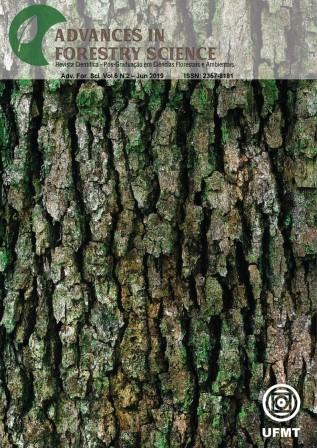Biomass quantification of Pinus taeda L. from remote optical sensor data
DOI:
https://doi.org/10.34062/afs.v6i2.7086Keywords:
Remote Sensing, Vegetation Index, modellingAbstract
This research aimed to estimate the biomass of the trunk area of a Pinus taeda L. stand from vegetation indices from Landsat-8/OLI and Sentinel-2/MSI optical remote sensors. In order to obtain the biomass, a forest inventory was carried out with the installation of 33 circular plots of 400 m², in which all the individuals had the diameter at breast height (cm) and the total height (m) measured. Then, 30 trees were scaled by the Smalian method. The individual tree volume was estimated by the Meyer regression volumetric equation. The biomass was obtained through the product of the individual tree volume by the wood basic density. Subsequently, aerial biomass was obtained per plot. The processed orbital images were gathered from the Landsat-8/OLI and Sentinel-2/MSI sensors. We derived 19 vegetation indices for both images, which were correlated with the biomass per plot. The indexes with the best correlation with the biomass were considered as regression variables to develop models by the Stepwise technique (Backward and Forward). The correlation was significant among the variables and the best model was derived from the Landsat-8 data, which estimated the biomass per plot with an error of 8.75% and an adjusted coefficient of determination of 0.8173. Nevertheless, the statistical analysis revealed that there was no significant difference between the biomass estimated by the inventory and by the remotely located data.
Downloads
Downloads
Published
Issue
Section
License
All copyright must be assigned to the Federal University of Mato Grosso.

